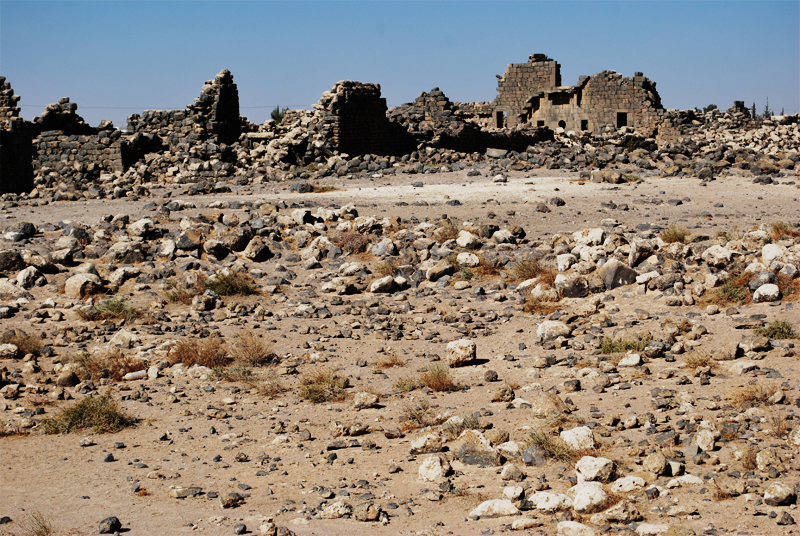L’antica Gerasa, a 30 km da Amman, è stato un importante centro romano a partire dal 64 a.C., quando fu annessa alla Provincia di Siria.
Arrivato al sito archeologico, cioè la città antica, mi si prospetta questa gigantesca porta:

Jerash, l'arco di Adriano, all'entrata del sito archeologico
Si tratta dell’arco di Adriano, eretto in onore dell’imperatore durante una sua visita. È alto 13 metri e largo 37.
Dopo aver fatto il biglietto mi incammino lunga la strada principale, il cardo maximo, costeggiato da imponenti colonne:

Jerash, il colonnato del cardo maximo
Il cardo maximo, orientato sempre nord-sud, è uno degli elementi urbanistici classici delle città romane, insieme ai decumani, due strade orientate est-ovest che lo interesecano.
Il lascito dei romani è abbondante, come in tutto il Medio Oriente. Qui si può ammirare il foro, dalla forma stranamente ovale:

Jerash, vista dall'alto del foro ovale e del cardo massimo
Il suo ruolo non è ancora chiaro agli studiosi: potrebbe essere stato il centro commerciale oppure un luogo di culto. In base a queste due interpretazioni il piedistallo nel mezzo potrebbe essere il basamento di una statua o un altare.
Agli incroci tra cardo maximo e decumani vennero costruiti due tetrapylon (dal greco “quattro porte”); nella foto vedete quello settentrionale:

Jerash al tramonto, sulla destra il tetrapylon
Oltre i vari colonnati, resti di templi e di fontane, ci sono anche due teatri. Il più grande, il teatro settentrionale, ha ancora un’ottima acustica:

Jerash, il teatro settentrionale
The ancient Jerash, 30 km from Amman, was an important Roman center from 64 BC, when it was annexed to the Province of Syria.
Arrived at the archaeological site, the ancient city, he promises this gigantic door:

- Jerash, Hadrian’s Arch, entrance to the archaeological site
-
This is the Hadrian’s Arch, erected in honor of the emperor during his visit. It is 13 meters high and 37 wide.
After bought ticket I walk along main street, the cardo maximo, flanked by massive columns:

- Jerash, colonnade of cardo maximo
The cardo maximus, always oriented to north-south, is one of the classic urban elements in roma cities, along with decumans, two east-west oriented streets that interesect it.
The legacy of the Romans is generous, as in all the Middle East. Here you can see the foro, oddly shaped oval:

- Jerash, view from the top of the oval foro and the cardo maximo
Its role is not yet clear to archaeologists: it may have been the commercial center or a place of worship. Based on these two interpretations the pedestal in the middle could be the base of a statue or an altar.
At intersections between cardo maximus and decumans the built two Tetrapylon (from the greek “four doors”); in the picture you see the northern one:

- Jerash al tramonto, sulla destra il tetrapylon
Besides various colonnades, remains of temples and fountains, there are also two theatres. The biggest one, northern theatre, still has great acoustics:

- Jerash, northern theatre


















